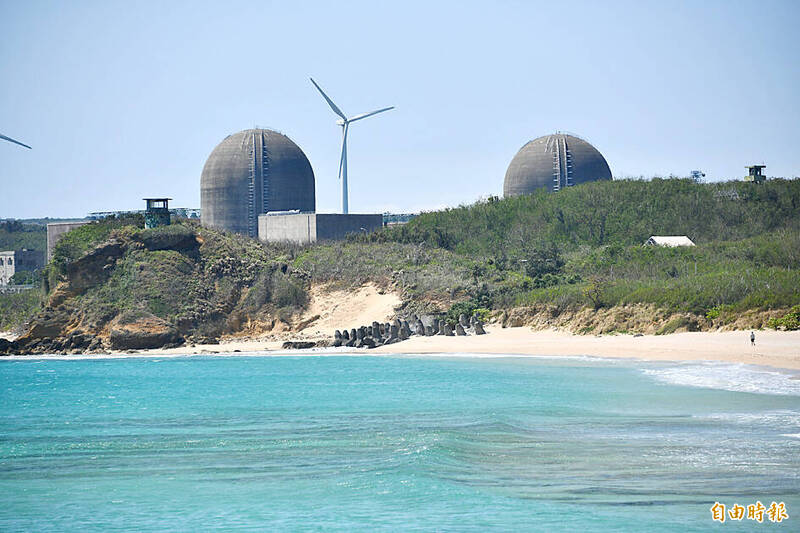《TAIPEI TIMES》 Taiwan goes nuclear-free as reactor closes

The Ma-anshan Nuclear Power Plant in Pingtung County’s Hengchun Township is pictured yesterday. Photo: Tsai Tsung-hsien, Taipei Times
By Chen Cheng-hui / Staff reporter
Taiwan Power Co (Taipower, 台電) yesterday temporarily shut down the nation’s nuclear energy generation as the state-run utility started regular maintenance on the remaining reactor at the Ma-anshan Nuclear Power Plant for 41 days.
The No. 2 reactor of the nation’s only active nuclear plant in Pingtung County’s Hengchun Township (恆春) is set to be decommissioned next year. The No. 1 reactor has been offline since July.
The shutdown is to perform equipment maintenance and fuel replacement in preparation for the power plant’s next operating cycle, Taipower said in a statement.
With support from other energy sources, Taipower would ensure sufficient power supply during the 41-day period as it aims to maintain its operating reserve margin — or spare capacity at times of peak consumption — at 10 percent during the day and more than 7 percent at night, it said.
Taiwan is poised to become the first non-nuclear nation in East Asia after the No. 2 reactor closes down in May next year, although there is a continuing debate among ruling and opposition parties as well as within society about whether to extend the service life of the Ma-anshan plant amid fears about potential power shortages.
Nuclear power last year accounted for 6.31 percent of the nation’s energy use, which is dominated by coal at 42.24 percent and liquefied natural gas at 39.57 percent, while renewable energy only contributed about 9.47 percent and hydroelectricity 1.08 percent, Energy Administration data showed.
When the Democratic Progressive Party (DPP) took office in 2016, then-president Tsai Ing-wen (蔡英文) proposed a nuclear-free homeland policy by next year, setting a target energy mix of 50 percent natural gas, 30 percent coal and 20 percent renewable energy, but President William Lai (賴清德) is facing greater pressure to review the structure of the energy mix as public worries about the dangers of nuclear energy have been replaced by a fear of power shortages.
It comes as Taiwan’s power consumption is forecast to grow by an average of 2.8 percent per year through 2033, driven mainly by the ever-growing energy use in the artificial intelligence (AI) sector, and as the government aims to achieve net zero carbon emissions by 2050 to help combat climate change.
In an interview with Bloomberg News, Premier Cho Jung-tai (卓榮泰) said Taiwan is “very open” to using new nuclear technology to meet surging demand from chipmakers and the AI industry — one of the strongest signs yet that the DPP government is rethinking its opposition to nuclear energy.
“As long as there is a consensus within Taiwan on nuclear safety, and a good direction and guarantees for handling nuclear waste, with this strong consensus we can have a public discussion,” Cho said on Thursday last week.
“We hope that Taiwan can also catch up with global trends and new nuclear technologies,” the premier said, adding that he has asked Taipower to make sure that personnel related to the decommissioned reactors stay in their jobs.
“This is because we need to prepare for future nuclear technology developments and to respond to any potential legal changes in Taiwan,” Cho said.
Additional reporting by Bloomberg
新聞來源:TAIPEI TIMES























